Aiptasia are the Japanese Knotweed of the saltwater aquarium world.
Ugly, invasive, damaging, destructive, and very difficult to get rid of, they have caused many hobbyists to rip down their tanks and start again or even give up altogether.
Once they get a foothold in your aquarium they can quickly take over spreading rapidly over the rocks in your display tank suffocating any corals. They will populate your sump and even occupy your pipes and overflow.
So what is the best way to get rid of aiptasia? Let’s first have a look at what they are and how you get them in the first place.
Table of Contents
What Are Aiptasia
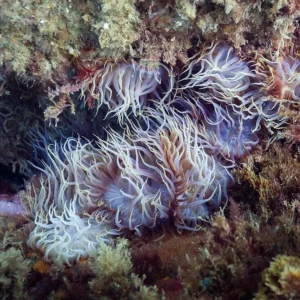
Aiptasia are a form of anemone and are also commonly called Glass, Tube or Rock anemones.
There are a brownish-tan colour with a stem attached to a disk containing the mouth. The disk edge is covered in multiple sweeping tentacles which help the anemone to catch passing morsels of food.
Those tentacles also contain stinging cells which can stun any small live prey. Unfortunately they will also use them to sting any adjacent corals causing them to retract and eventually die.
How Do You Get Aiptasia
Aiptasia are a classic hitchhiker pest and invariably end up in our saltwater aquariums attached to coral frags or uncured live rock.
Aiptasia are excellent at hiding when threatened and will retreat right inside the tiny hole in the rock they sit on.
They can remain inside for weeks and even months before venturing out so if one is hidden under that new coral you have just added you may not spot it until it is too late.
A single aiptasia brought in on a coral frag will quickly become a plague.
You should very carefully inspect any new coral frag before purchase and quarantine the new coral in a separate tank if you can for a few weeks to see if any aiptasia appear.
Coral dips won’t kill aiptasia and whilst a freshwater dip would flush them out eventually it may take so long as to also kill your new coral.
Are Aiptasia Harmful
As well as being unsightly, Aiptasia are very harmful in a coral reef tank. They spread rapidly occupying your rockscape real estate and they will sting any adjacent corals that try to encroach.
So effective are they at this that they will spread throughout your tank killing all your corals as they continue their remorseless spread.
They must be stopped! But how…
Best Ways To Get Rid Of Aiptasia
Happily, there are a number of ways to get rid of aiptasia in your saltwater tank. Let’s take a look at some of the more effective methods.
Natural Ways To Get Rid Of Aiptasia
There are a number of natural ways to get rid of aiptasia. As you would expect, something has evolved that will make a meal of them.
Aiptasia Eating Filefish

Acreichthys tomentosus, Aiptasia eating filefish are from Indonesia and are a natural predator for aiptasia and they will usually eat them in our saltwater aquariums.
However, they are quite a shy fish and will not do well with aggressive tank mates if you have any of those.
Some people have reported that some filefish won’t touch aiptasia or that they can nip at soft corals.
Sometimes, it can come down to an individual fish’s personality so add an Aiptasia eating filefish with caution.
Berghia Nudibranch
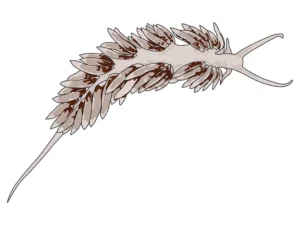
Berghia Nudibranch definitely eat aiptasia, in fact, that is all they do eat, so be aware that if you use them they will starve once all the aiptasia are gone.
Perhaps you could pass them on to a fellow hobbyist once they have worked their magic in your aquarium.
They can be tricky to get hold of and expensive but at what price, an aiptasia free tank?
In the UK we’re quite lucky, you can get a reliable supply of Berghia Nudibranch from berghiaonline.co.uk. On the odd occasion when they don’t have them in stock, you can register and they will email you when they have them available
Be aware that Berghia Nudibranch take some time to work. It is usually the offspring (and their offspring) of the Berghia Nudibranch you introduce that really get to work on aiptasia.
So it can take up to 6 weeks before you notice any reduction in aiptasia. You should also always introduce at least two, and preferably three Berghia Nudibranch so they have the best chance of finding each other and breeding.
Take care not to introduce any new small Berghia Nudibranch near to any large aiptasia as they may get entangled in their tentacles and eaten.
Also, do not use Berghia Nudibranch if you have any fish, such as Wrasses (except Fairy wrasses) and Long-nosed hawkfish, that may make a meal out of them.
Likewise, peppermint shrimp will eat Berghia Nudibranch so if you have already introduced those to help with aiptasia don’t add Berghia Nudibranch without first removing the shrimp.
Copperband Butterflyfish
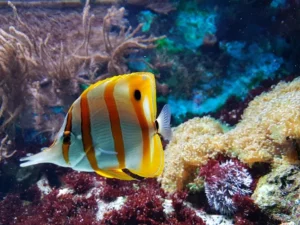
A beautiful addition to any saltwater aquarium, Copperband Butterflyfish will consume aiptasia but it’s not guaranteed. Some will, some won’t.
They may also eat feather dusters and clams so if you have any of those you may regret it.
Copperband Butterflyfish are also notoriously difficult to keep in saltwater aquariums. They are very picky eaters and you should only ever get one after you have seen it consuming mysis or brine shrimp in your local fish store.
As they can be difficult to keep, we would not recommend getting one for the sole purpose of getting rid of aiptasia.
Peppermint Shrimp

Peppermint Shrimp are perhaps the best natural predator you can get for controlling aiptasia but make sure you get the right one.
Lysmata wurdemanni is the one you want and these are real aiptasia eating machines. They are sociable animals so be sure to get at least two.
As scavengers, they will also feed on just about anything and will thrive even after they have cleared up all the aiptasia.
Chemical Ways To Get Rid Of Aiptasia
Various chemical methods have been tried over the years to get rid of aiptasia and some work, some of the time. Whilst they will never be as successful as natural predation they can curb small aiptasia outbreaks.
Lemon Juice
Squirt directly into the aiptasia’s mouth with a syringe. The acid in the lemon will kill the aiptasia.
Take care not to treat large numbers of aiptasia at once though as the acidity in the lemon juice could affect PH.
Kalkwasser
Similarly injected into the aiptasia’s mouth with a syringe, Kalkwasser can also affect PH and should only be used sparingly.
Super Glue and others
Other people have tried using super glue to seal the aiptasia’s mouth with some success.
Boiling water also works but is rather difficult to administer effectively unless you can remove the rock the aiptasia is on from the tank altogether.
Products To Get Rid Of Aiptasia
Naturally, a number of products have been produced to get rid of aiptasia and people have had success with many of them.
We have had some success with Aiptasia RX from Blue Life:-
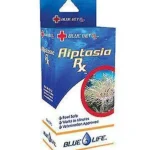 | Blue Life Vet Aiptasia Rx | Check pricing on eBay >> |
And also with Joes Juice:-
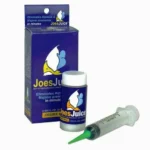 | Joes Juice Aiptasia Eliminator | Check pricing on eBay >> |
Best Way To Get Rid Of Aiptasia FAQs
How did Aiptasia get in my tank? – Aptaisia usually arrive in your tank as hitchhikers on live rock when you first set up your saltwater tank or on coral frags as you add corals.
You should, therefore, closely examine any new coral frags before adding them to your tank.
What is the best fish to get rid of aiptasia? – A Copperband Butterflyfish is probably the best fish at getting rid of aiptasia. However, once the aiptasia are gone you may struggle to keep this fish fed as they are notoriously picky eaters.
An Aiptasia Eating Filefish may be a better bet but some may go after corals so add with caution.
Can you remove Aiptasia by hand? – No, is the short answer. Even with tweezers, it will be unlikely that you can grab one before it retracts. If you damage it, it will release spores leading to even more aiptasia.
Can you starve out Aiptasia? – Sadly, there is no real way to do this in your tank without starving everything else. If you can remove the rock you could place it in a bucket with no light or food and eventually the aiptasia will die.
This could take months though so it would be better to let the rock completely dry out before returning it to your tank.
